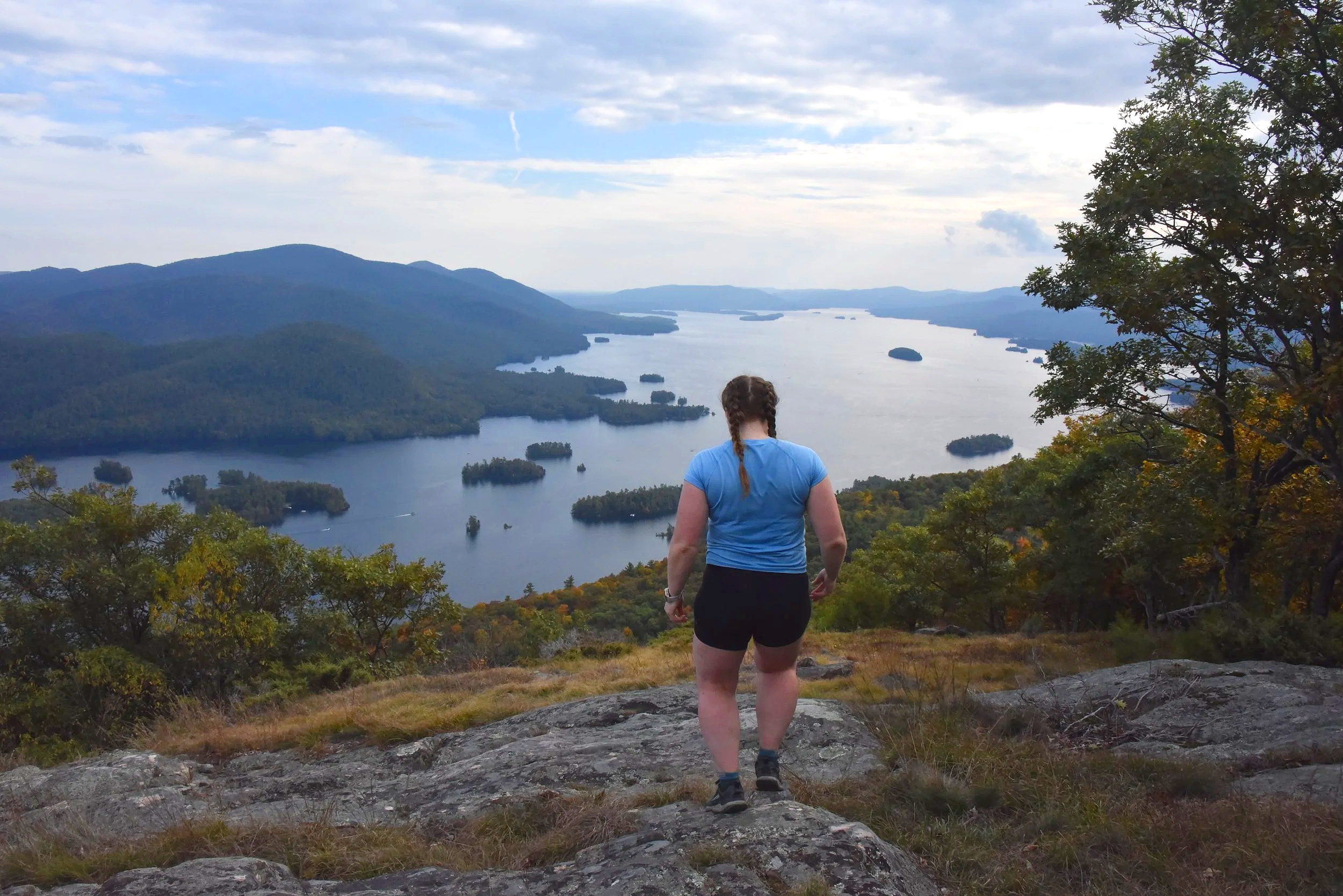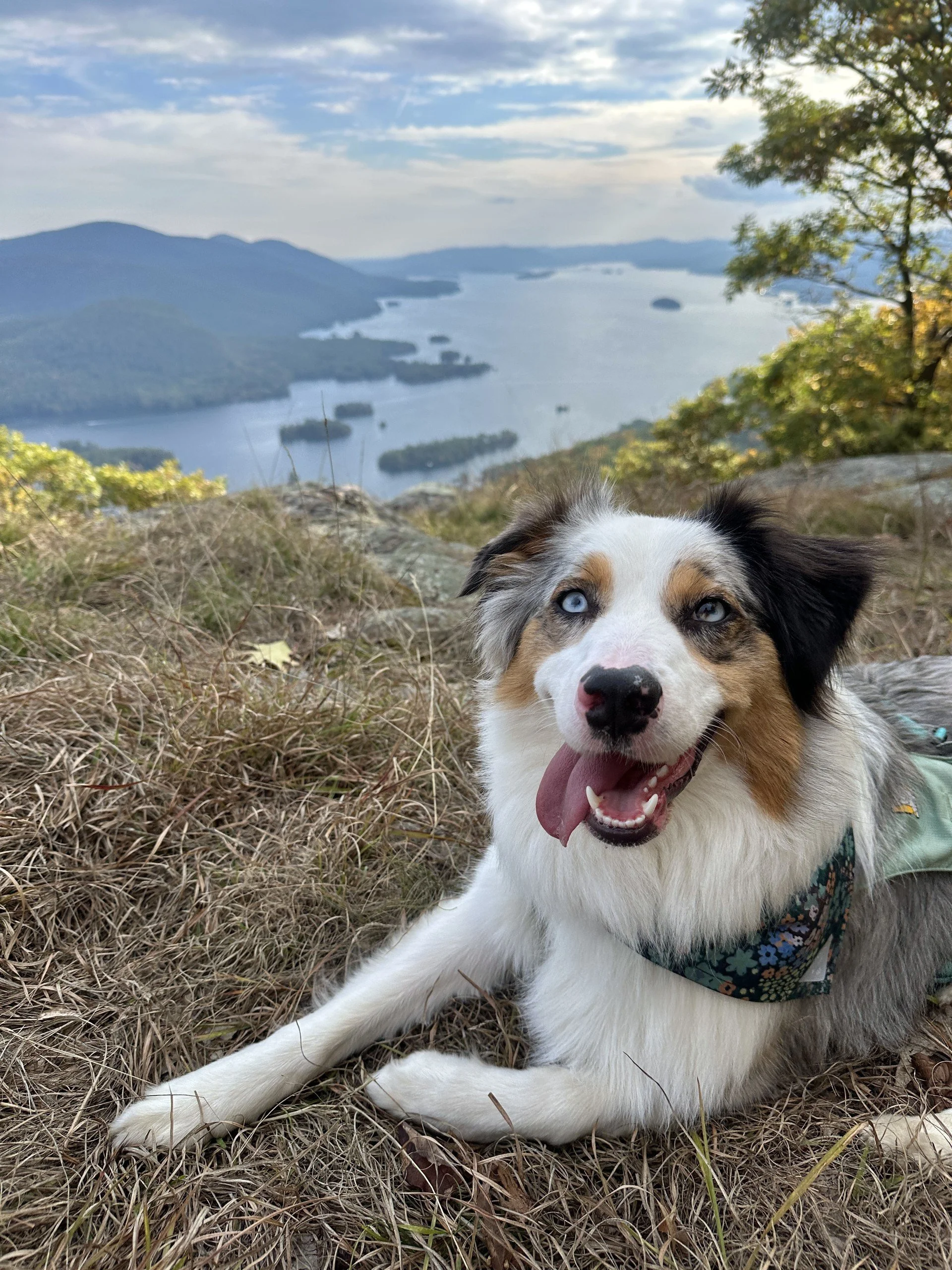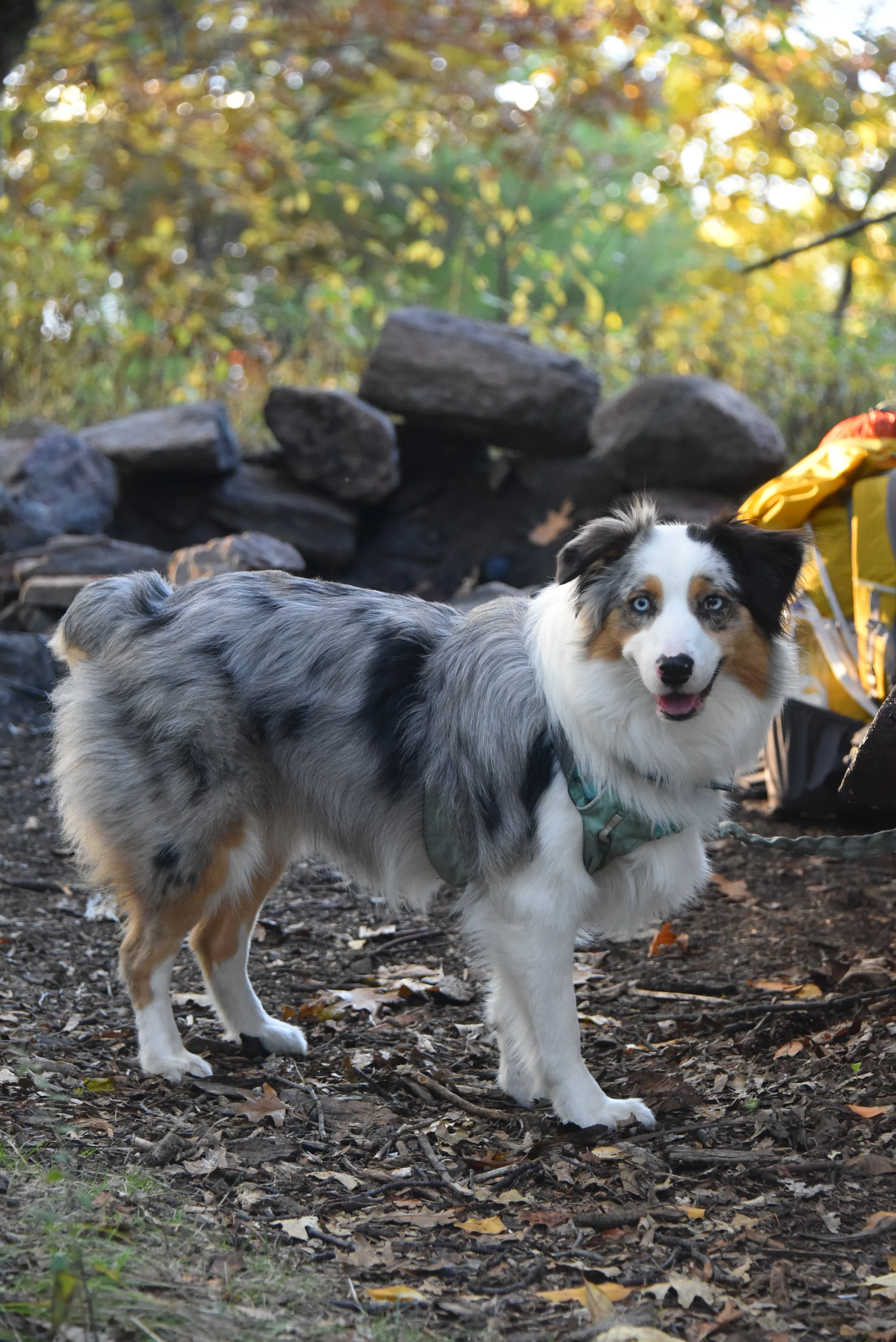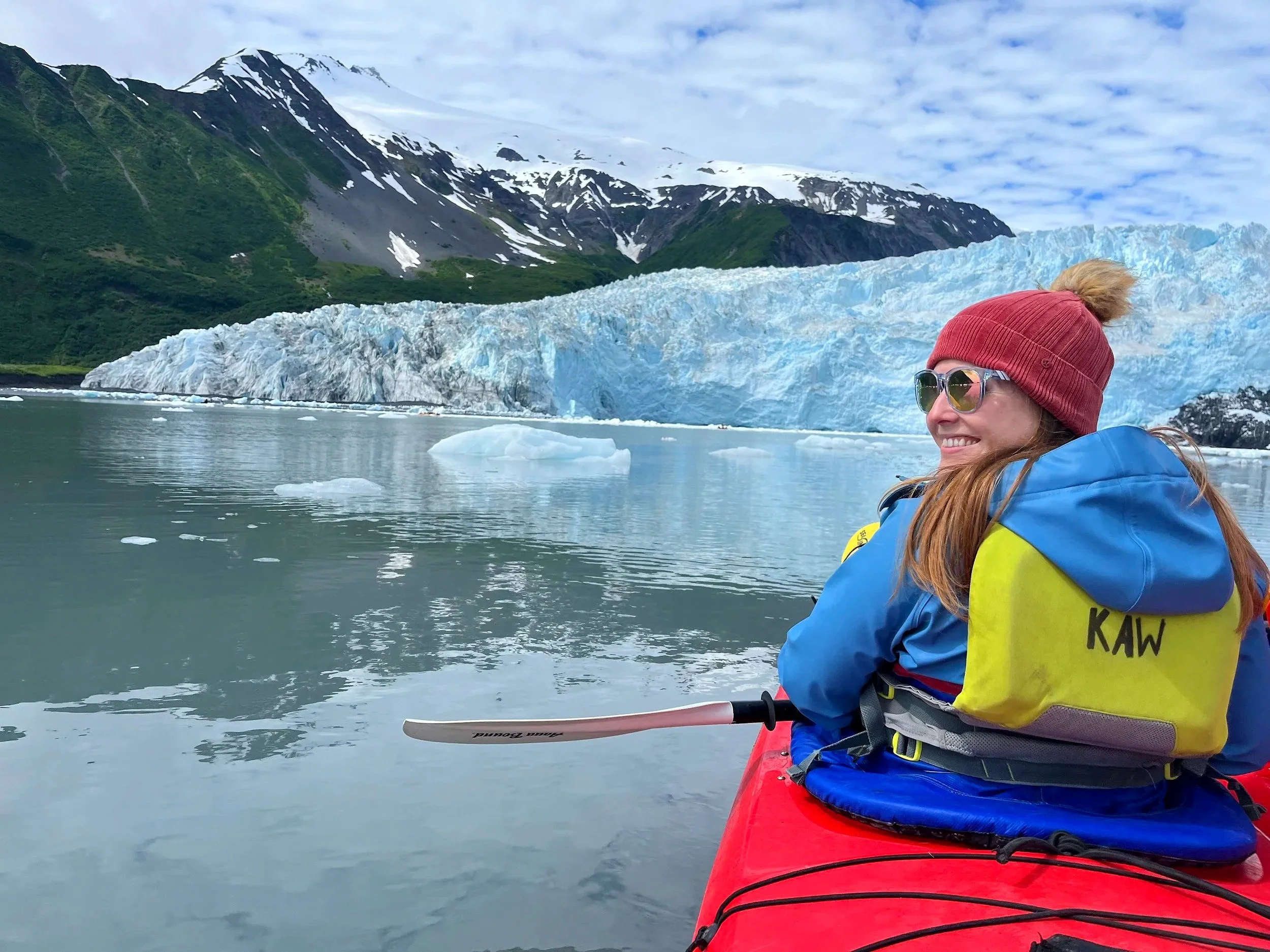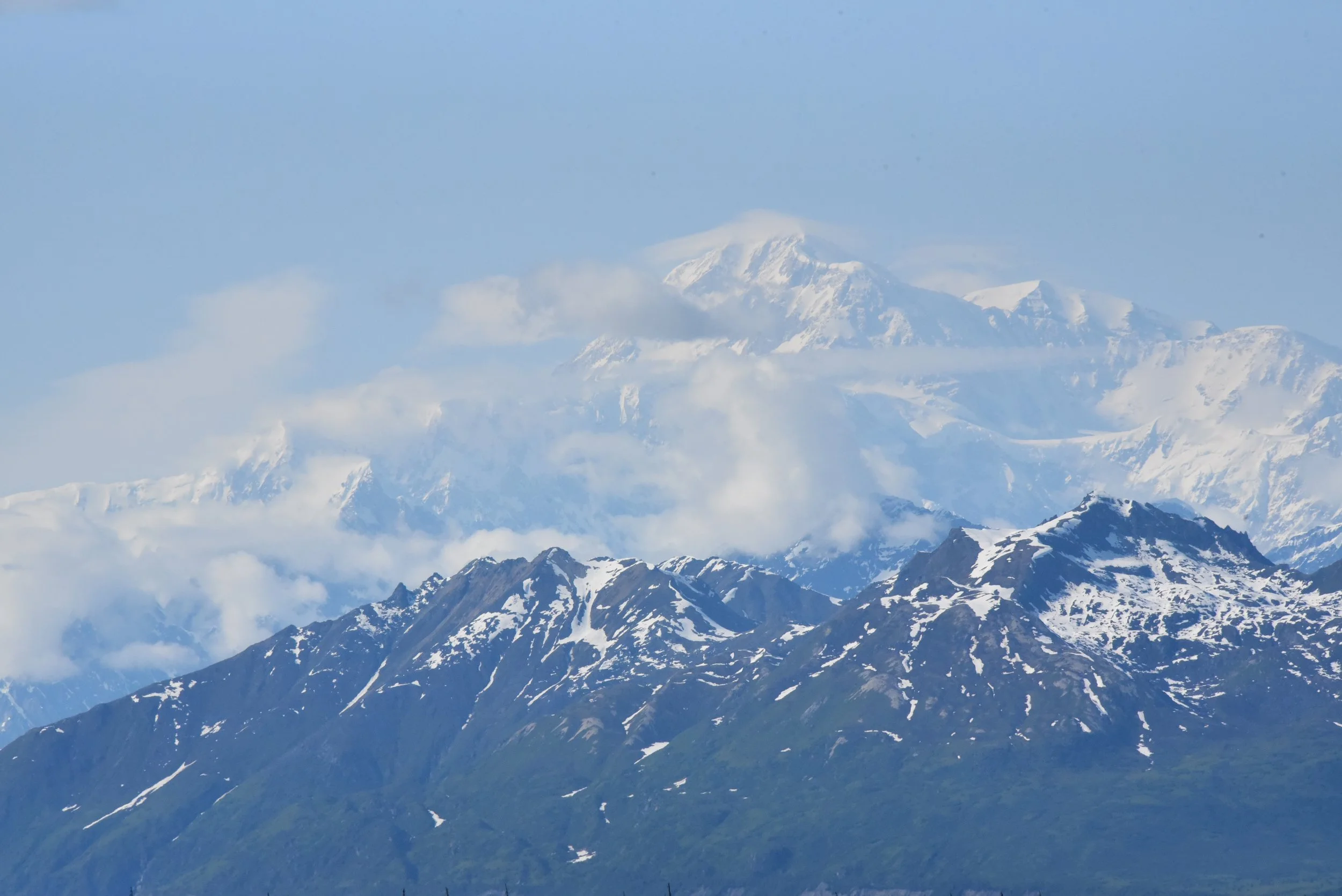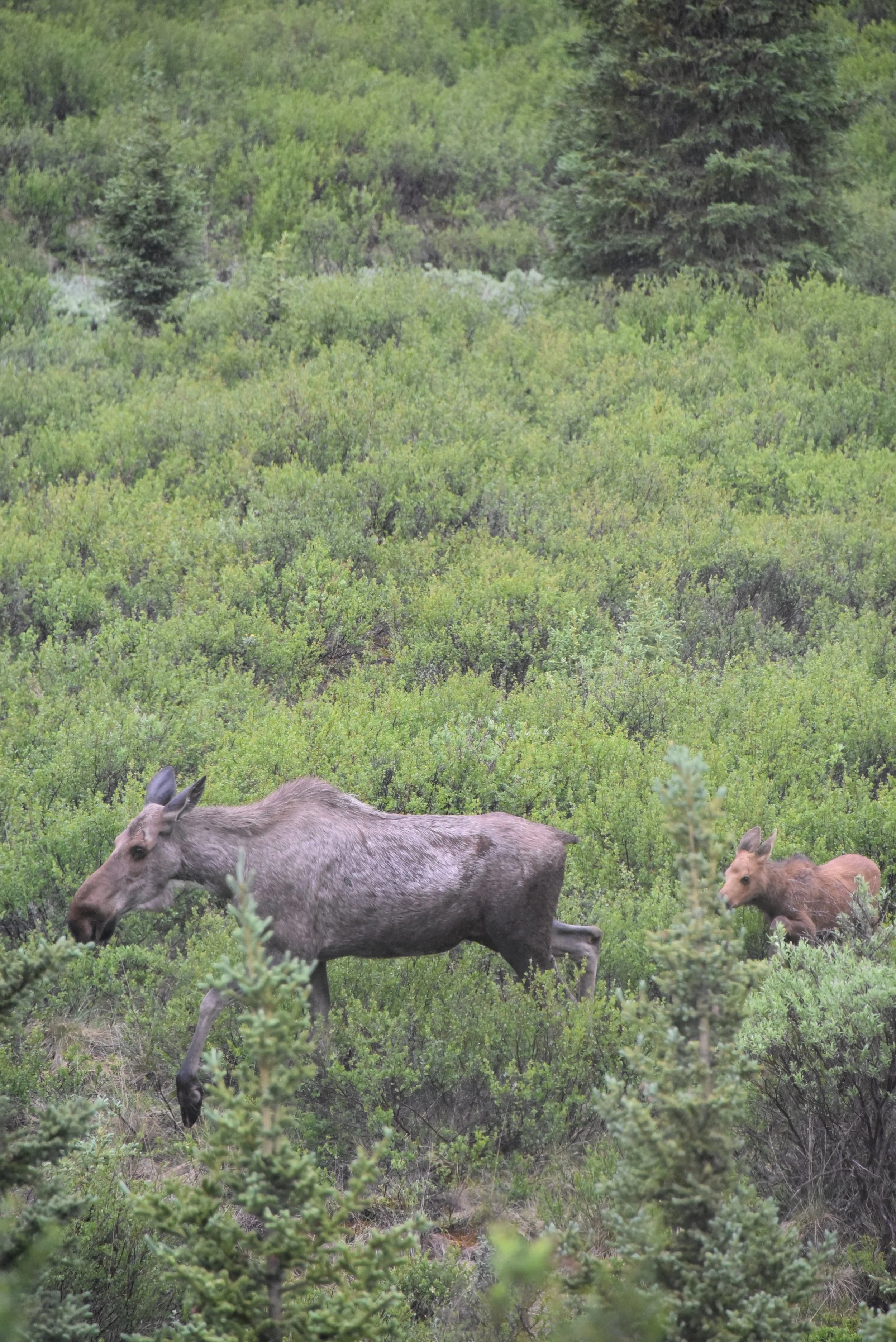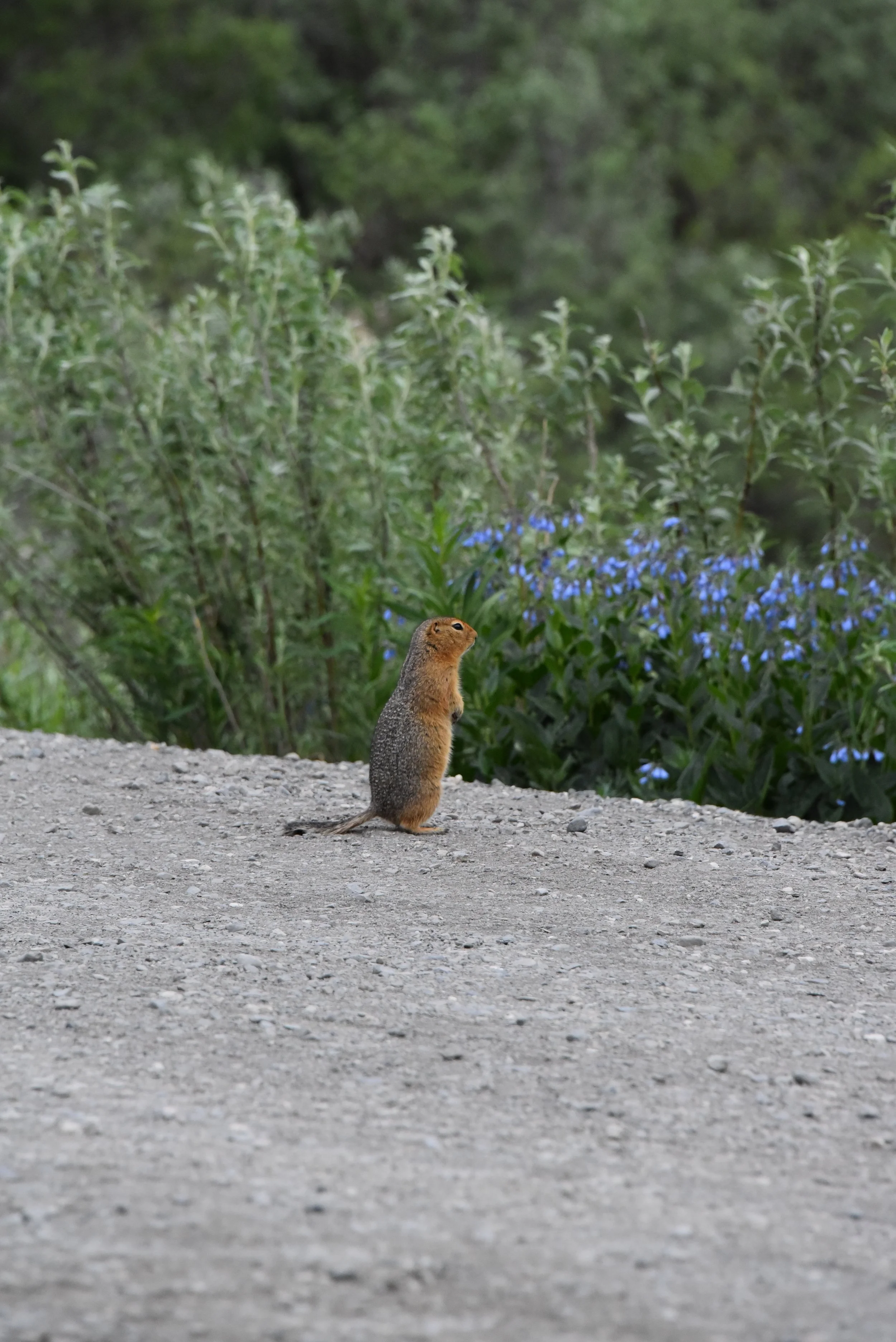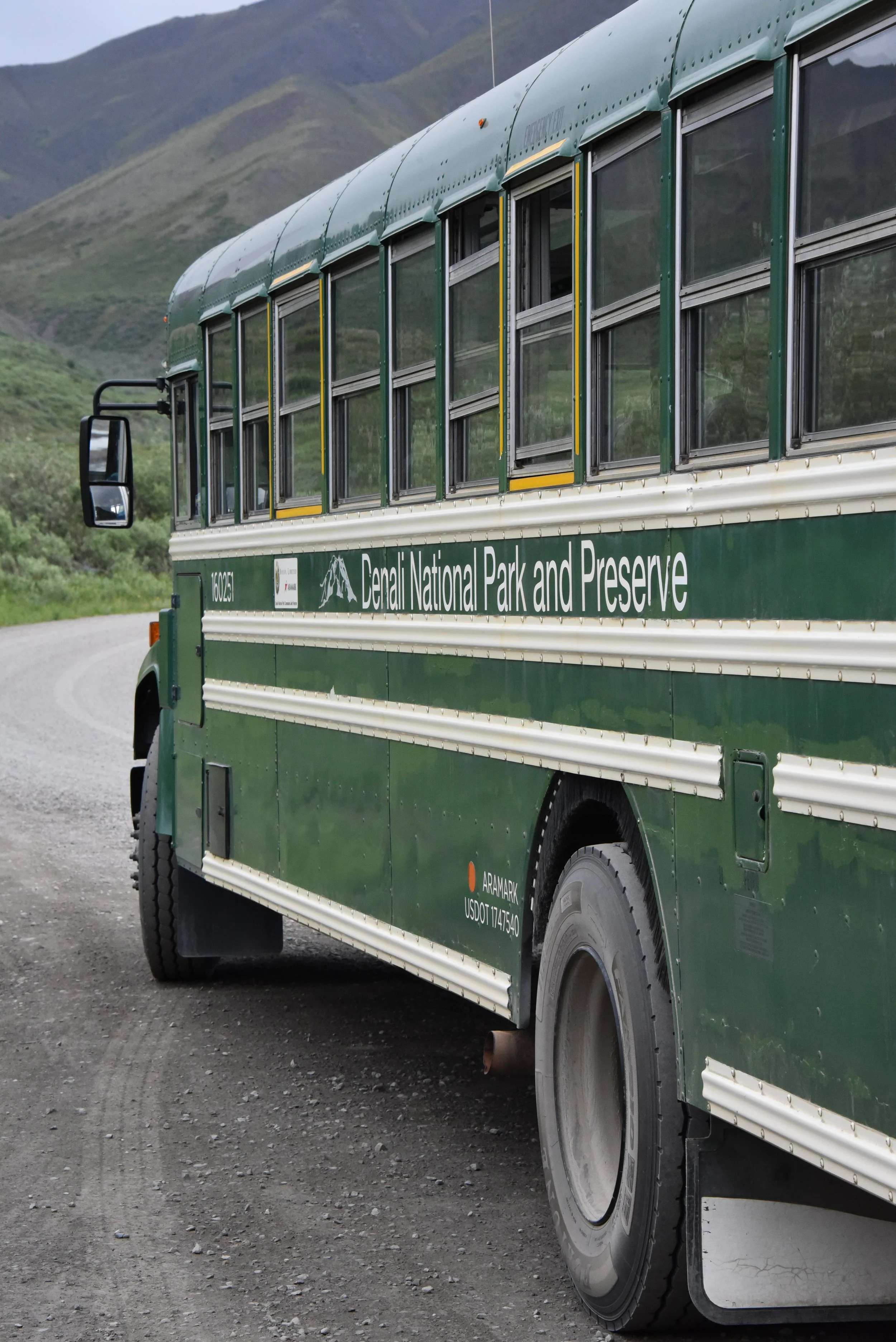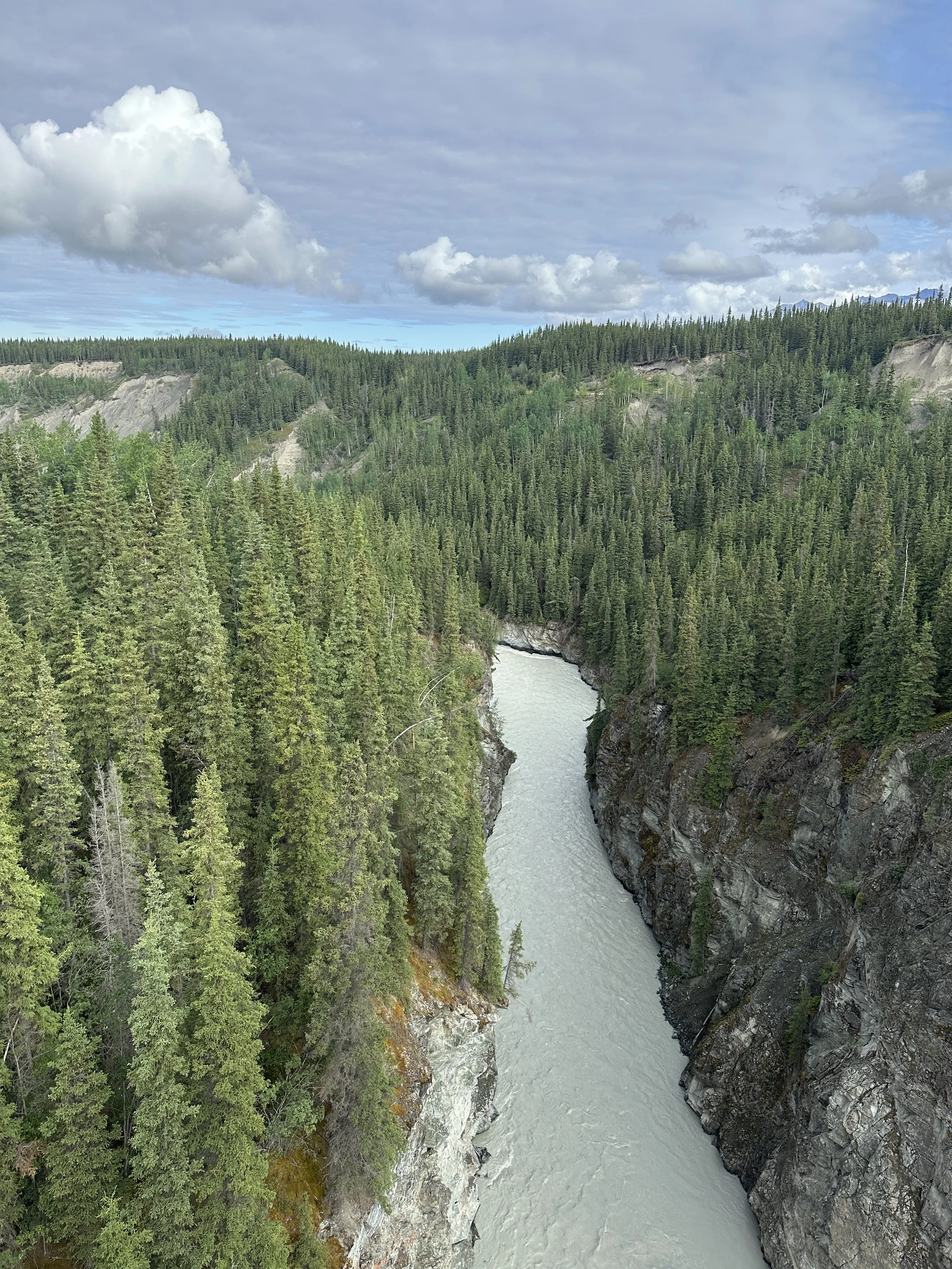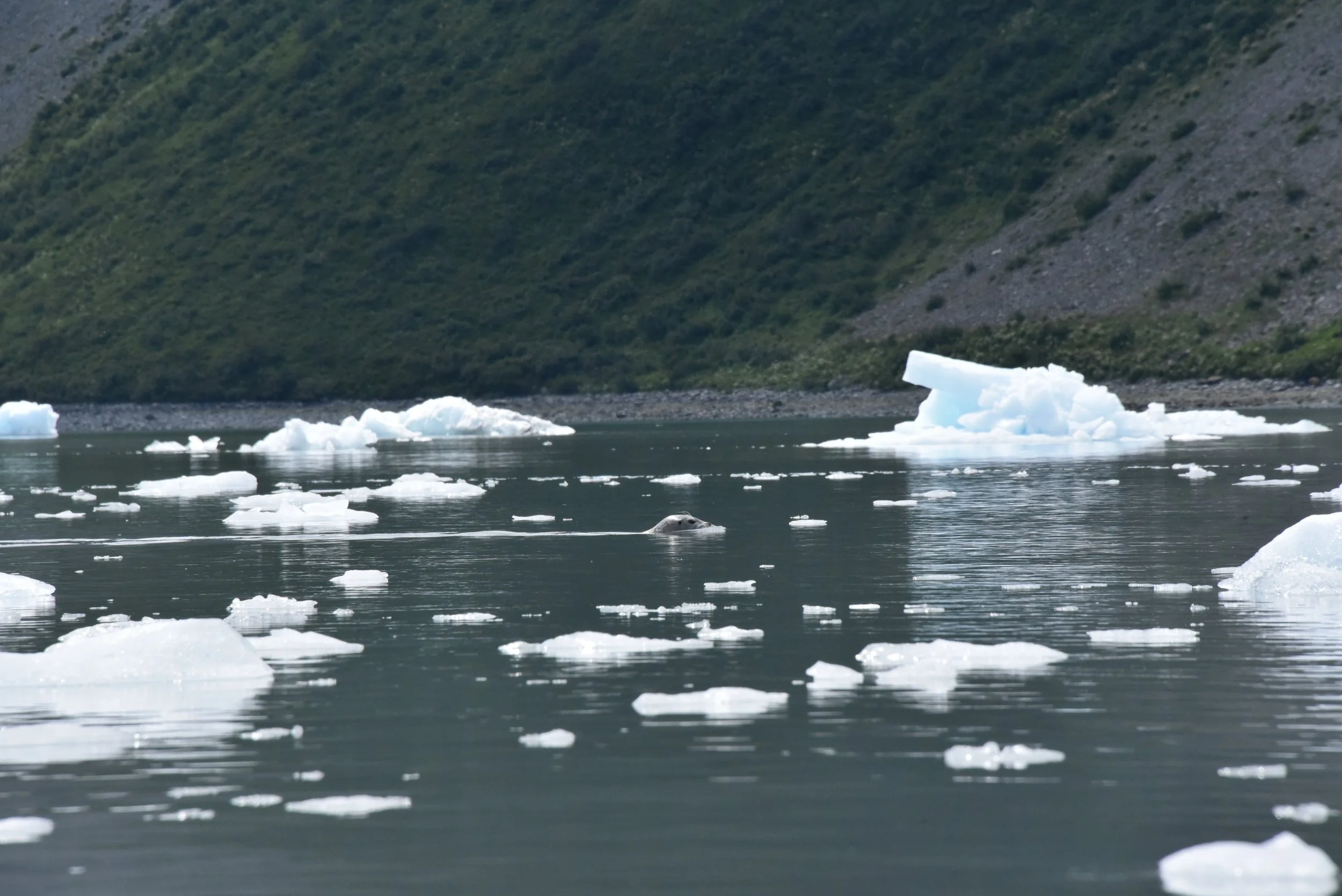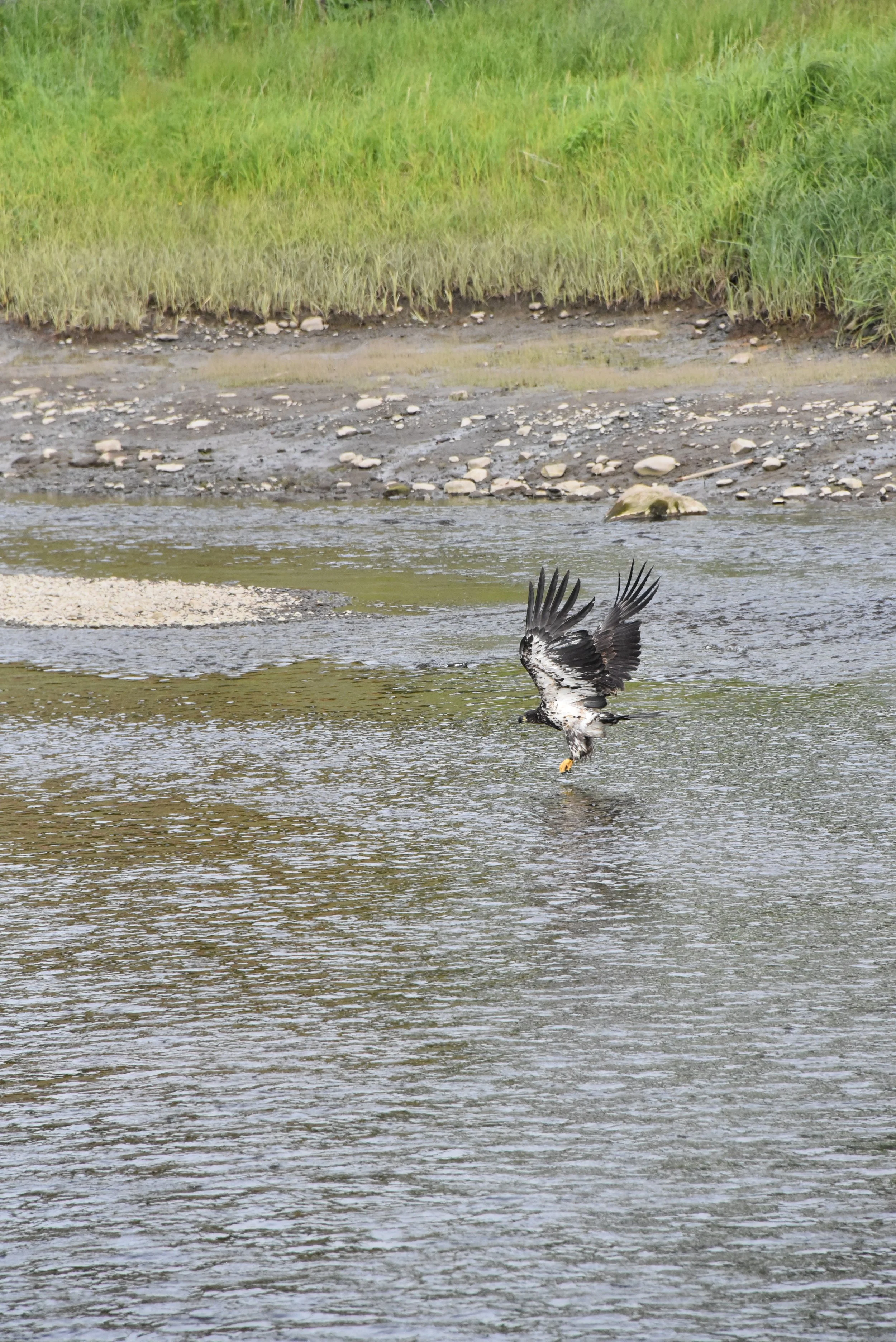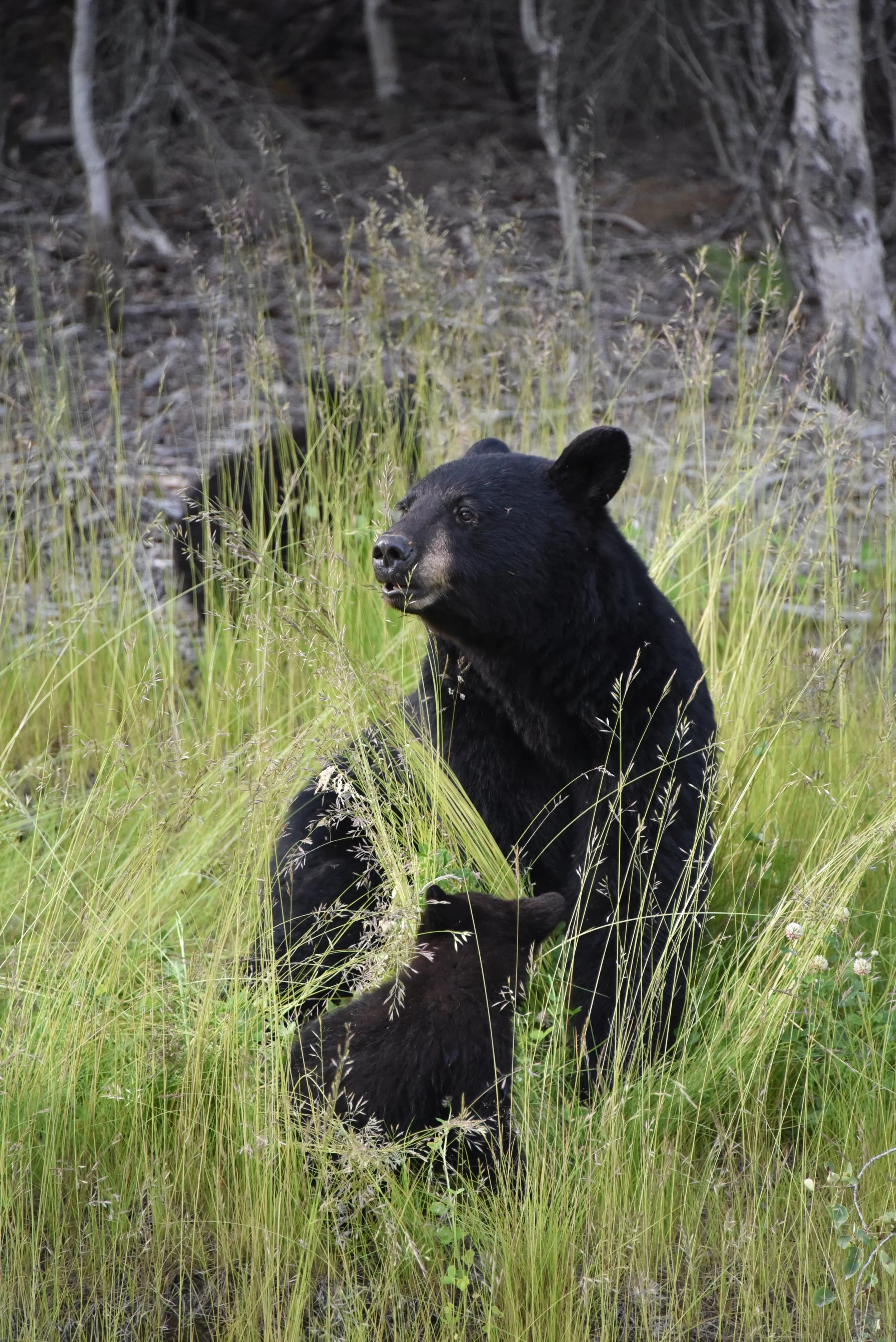Taking on the Tongue Range: Lake George’s Best-Kept Backpacking Gem
In the midst of the Adirondacks’ best season, we took on the Tongue Range to summit 6 of the LG12. Here's how we hiked them all in one overnight trip...
As a lover of lists, I found myself without a hiking one for the first time in what felt like forever. I chased summit after summit across the Northeast for years, but after completing my hardest challenge yet (the Northeast Ultra 8) this past July, I hadn’t thought of what was next.
I knew I wanted a new goal, but a doable one with my dog Poppy. My friend Liz suggested the Lake George 12ster. My only true experiences in Lake George were of Stewart’s stops en route to the Adirondacks, so I hadn’t really stepped onto the trails there. But as with every area I decide to explore, I’m constantly impressed by what I find when I don’t have many expectations. After two incredible camping trips in Lake George in August, Poppy and I were halfway through the list.
As luck would have it, Liz and her friend planned to wrap up the Lake George 12ster with a fun-filled finale – backpacking the Tongue Range. I instantly asked if we could join in on the adventure. Turns out, I had the Tongue Range saved on my list of future hikes for the last few years after seeing a few beautiful shots on trail—never really realizing it was part of a challenge at all. I kept pursuing other longer days and pushing this one further down the list. It’s a beautiful moment when things come together because now I found myself with this hike at the top of my list that I get to hike with the friend who urged me to go for those mountains.
In the midst of the Adirondacks’ best season, four of us (and Poppy) met at Deer Leap to take on the Tongue Range. Here’s how it went:
SATURDAY
9 AM- We left one car at the Clay Meadow Trailhead (Lake Shore Dr, Bolton Landing, NY 12814) and another at Deer Leap (Silver Bay, Deer Leap Trail, Silver Bay, NY 12874). We embarked on Deer Leap with heavy packs and full hearts as we were thrilled to be outside during foliage season. It’s tougher as we’re getting older to plan a weekend away that aligns with everyone’s schedule and the weather conditions. We were in for a treat it felt like.
That treat melted a couple miles later as we warmed up. Packs felt heavier. Fall felt like summer. It’s been an unseasonably warm start to autumn, but with no rain in the forecast, our spirits remained high.
Making our way along the trail, we summitted Brown (1966’), Huckleberry (2232’), Five Mile (2256’), and finally, Fifth Peak (1813’). Four mountains on the Lake George 12ster list. The only memorable peak of this part of the range was the finale – Fifth Peak. Our home for the evening after six miles and 2,000 feet of elevation gain.
It was around 1 P.M. when we settled into the Fifth Peak lean-to. We unloaded our big packs and took out what we needed to our smaller day packs.
1:30 PM- We headed out for the afternoon portion on the itinerary – featuring more hiking, more sweating, and more eating. Essentially what backpacking is. This leg of the trip would be much lighter gear-wise. We planned an out-and-back to French Point (1756’) and First Peak (1586’), the final two Lake George 12ster peaks in the Tongue Range. This was arguably the toughest part of the day, but it came with the best views. The out-and-back was a total of 7.3 miles with 2,800 feet of elevation gain. We took breaks at the summits to take in the view, rest our legs, and eat snacks before heading back to camp.
At this point, none of us were excited about the back portion of the out-and-back. We descended and ascended a lot, and knew very well what that would mean. Thus, we weren’t looking forward to it. Especially knowing we’d make it back to camp after dark.
But as all hiking goes, we put one foot in front of the other. We were all chatting and before we knew it, we found ourselves on a bit of exposed rock in a small clearing, with about a mile to go. We looked up and realized we stumbled upon an open view of the sunset. I gave up on my hope to see the sunset from a visible spot earlier in the afternoon based on where we were and the time of day. The day had been an adventure already, so I told myself, onwards and upwards. When we reached a spot where we had a wide opening to watch the sunset, I couldn’t believe it. It made the moment all the more memorable.
It started out tame. Just a subtle, faded pink. Then the sunset came alive with a blazing fire of deep purples and oranges encompassing the entire sky above the stacked layers of deep blue mountains in the distance. We spent some time soaking it in. I ate my first Nerds cluster. What a time.
After the sun set behind the mountains, we took out headlamps and hiked back to our lean-to.
7:30 PM - It was my first time sleeping in a lean-to! The Fifth Peak lean-to felt new because of how well-maintained (or untraveled) it was. We packed a tent, in case the lean-to was occupied, but thankfully we didn’t need to use it. As a result, no tent breakdown in the morning. We called it a night after preparing some delicious dinner, Peak Refuel’s White Chicken Chili for me (with a single serving of Cholula’s of course) and Oreos for a little sweet treat.
SUNDAY
6 AM- We woke up to sip hot coffee and watch the sunrise. This was my first time trying out Alpine Start’s instant coffee and it was perfect!
Our bodies ached, but our hearts were full, knowing what we accomplished yesterday. The lean-to is eastward facing, so the sunrise was seen through the trees. Fifth Peak’s summit slowly began to wake up with the sun. There’s a small viewpoint down from the Fifth Peak lean-to of a sliver of Lake George encompassed by fog that was a lovely sight to see.
The slow pack-up process began. It was slow going because we did not want the trip to end, and because we should have stretched before bed. Packing was so much easier this time around than it was when I first backpacked on the Northville-Placid Trail. We drank all our water by this point and ate all our food (aside from small snacks). Our packs were instantly loads lighter.
Poppy rocked her own pack on the trail. This was her first backpacking trip!
7:45 AM- We hiked down the .2 miles along the Fifth Peak Lean-to Trail to the fork, continued another .5 along the Tongue Mountain Range Trail, and finished with two miles on the Five Mile Point Trail to our car parked at Clay Meadows. A total of 2.7 miles and only 175 feet of elevation gain. We dropped nearly 1,500 feet though.
9:30 AM – After a drop-off at our other car spot, we were off to a nearby diner for a well-earned breakfast before all heading home.
Notes:
Rattlesnakes and bees - The Tongue Range is known for its rattlesnake habitat. Given the time of year, we weren’t worried about this, but it is something to keep in mind dependent on the season. Additionally, bees and wasps were abundant.
Rough terrain - The Tongue Range can be made into a loop. I did not hike the loop. Part of the Tongue Range, if you’re completing the loop, was wrecked by storms two years ago, and there has been a wonderful amount of trail maintenance to improve the trails on that section since. However, some hiker reviews still mention the damage. The out-and-back we did was in an effort to be able to drop packs off at the lean-to, and to avoid the rougher part of the Tongue Range.
Is the Lake George 12ster on your list? Would you tackle the Tongue Range in a day, or take it all in with an extra day?
If you’re also a list lover, check out these hiking challenges in the Northeast:
The Ultimate Alaska Road Trip: 3 National Parks in 9 Days
My last state to visit was the last frontier. A dream come true.
Here’s my 9-day Alaska itinerary, including visits to the only national parks accessible by car:
Day 1 – Anchorage to…
Kayaking alongside Aialik Glacier in Kenai Fjords for my 48th national park visit.
I've dreamt about Alaska for as long as I can remember. After visiting forty-nine states, the last one on the list happened to be the last frontier. It felt like this year may finally align to turn my dream into reality. For years my dad told me to book the flight. And for years, I made excuses. This time around, I didn’t hesitate. My flight was officially booked.
There are always a few hiccups in the planning, but Alaska truly felt like a different beast. I spent this past April feverishly researching and preparing for what I hoped to be the trip of a lifetime.
Here’s my 9-day Alaska itinerary, including trips to the only three national parks accessible by car:
Day 1 – Anchorage to Denali
After a day of traveling from New England to Anchorage (with a lucky, long layover in Dallas to visit my family), we arrived in Anchorage. We landed late at night, so our first official day started the next morning. A major perk of road trip travel is cutting down on food and time expenses. There’s always a time to splurge and try something new food-wise, but going out a couple times a day eats away at time I’d rather spend exploring.
That’s why our first stop on the great big Alaskan adventure was the grocery store. After stocking up on chili, peanut butter and jelly, and tuna (among other goodies), we drove from Anchorage to Talkeetna, a tiny town with a lot of charm. We scored free parking at the Talkeetna Riverfront Park next to the town’s campground (if you see paid parking, keep driving to the end of the road). We stretched our legs, checked out a few shops, and continued to our final destination for the day: Denali.
Talkeetna was a sweet stop where three rivers meet with a backdrop of Denali (though the pinnacle was covered for us, as seen in the first picture above). If I was short on time, I wouldn’t have made the stop. The superior stop is the Denali South Viewpoint when you’re almost inside Denali National Park. On a clear day, which we were fortunate to have, Denali in its entirety is visible. It is at mile 134 on the Parks Highway (the picture above on the right).
We called it a night at Denali Park Hotel and set our alarms for an early wake-up. Tomorrow, we’d dive into Denali.
Day 2 – Denali National Park
3:30 A.M. would typically feel early to me, but considering the sun sets in Denali after midnight, and rises before 3 A.M., it felt like no time passed. We headed into the park for our bus ride.
Denali is incredibly unique in that the singular road, Denali Park Road, spans 92 miles from the entrance to the end of the accessible part of the park. However, the Pretty Rocks landslide a few years ago (at mile 45) cut off access to the latter portion of the road. Nevertheless, Denali is still worth the visit. After debating between paying for a narrated bus or the transit bus, I opted for the latter— the East Fork transit bus. Both buses depart around the same time and travel the same distance. The Denali Tundra Wilderness bus costs $144.50 per person and the East Fork transit costs $33.50 per person. Our driver stopped for wildlife, restroom breaks, and my occasional urge to photograph the landscape I couldn’t get enough of.
I didn’t have high hopes for Denali given the road closure and the hype it gets in the lower 48, but the wildlife was abundant. We saw Dall sheep (from a distance), caribou, alpine ground squirrels, and moose, of course. The highlight was a meandering moose and her calf. After our drive through the park, we felt we experienced Denali and were ready to embark on the next adventure. The long days of sunlight make for smooth long distance driving as we made it to Copper Center for the night.
Day 3 – Copper Center to McCarthy
This part of the trip was the trickiest to navigate. Thankfully, the guides at St. Elias also double as travel agents. At least that’s what it felt like it with how helpful their staff was in ensuring I could make this trip to Wrangell-St. Elias National Park happen in a very limited timeframe.
The tough part is the travel. Rental car companies (aside from local Alaskan ones) ban both the “quick” way from Denali to McCarthy (via the Denali Highway) and the McCarthy Road. Both are unmaintained gravel roads. Though many drive on these roads and have no issues, all it takes is one flat tire with no phone service to make a trip memorable. And not in a good way.
I booked a shuttle service from Copper Center to McCarthy through Kennicott Shuttle for $169 per person (for the roundtrip on two different days). A slightly hefty cost for a substantial peace of mind. The three-hour drive stops twice for a restroom break and offers an opportunity to be behind the camera on a drive, instead of behind the wheel.
After the journey along the 60-mile gravel road, and a brief stop at the famous Kuskulana bridge, we made it to the footbridge to McCarthy. There's a free payphone to contact the owners of your stays, but the lovely owner of Blackburn Cabins was waiting for our arrival at the end of the bridge. A short drive later, we were at our remote cabin. Mere steps outside the cabin is a trail that leads to what is known as the Toe of the Glacier. We had this spot entirely to ourselves. It was our first experience with glacial calving, and not our last on this trip.
We sat in awe of the glacier that we’d been setting foot on the following day. Afterwards, we ate lunch at The Potato. One extremely satisfying chicken fajita pita devoured later, and I was ready for a hot outdoor shower and rest.
Day 4 – Wrangell-St. Elias National Park
St. Elias Guides bookings include a shuttle pick-up from Blackburn Cabins. We hopped in a van and were fitted for crampons shortly after at their home base in Kennicott. Kennicott is an old mining town and also the start of the trek to the Root Glacier trail. This is the easiest accessible glacier to hike and is completely worth the journey to get there.
After an easy hike to the base of Root Glacier, we put our crampons on before the big moment. Though I feel confident I could have done this without a guide, I would still go with a guide for the knowledge they have. Our guide knew where to find neat spots like blue pools and other gems I wouldn't have found alone. As America’s largest national park, my four-mile hike barely scratched the surface. I already want to go back to ice climb or hike into ice caves... both of which St. Elias Guides offer!
Root Glacier from the dirt trail.
We shuttled back to Copper Center that evening, and while we waited, we met a couple who drove the McCarthy Road and were returning from their Kennicott trip like us. I started to regret paying for the shuttle because it would have been so much nicer to hop in the car on our own schedule, but they returned from their car to tell us they had a flat tire. In one of the most remote corners of Alaska. Another spot where I had no cell signal (as it turns out, T-Mobile has no towers in the entire state of Alaska). Though they had what they needed to replace their tire, it made me grateful for the shuttle route.
Day 5 – Copper Center to Seward
We were back on the road after returning to Copper Center for the night. The best part about a road trip is the random stops along the way to the destination. We left an isolated part of Alaska for a more populated one. A coastal rainforest. I did not realize that type of terrain existed in Alaska. It’s one of the rainier regions of Alaska. It felt like the Pacific Northwest. Like I was back in Seattle wondering when the sun would come out. Or if it ever does.
We weren’t even settled into our campground before we were immediately informed by a fellow camper that a bald eagle landed atop a tree branch directly above our cabin. The eagle’s home was actually diagonal to our cabin, with two eaglets inside. No doubt a good start to this leg of the trip.
Day 6 – Seward
A day to ease into coastal rainforest life. We ate, shopped, explored, and tried to embrace the dreary climate. We also saw more eagles. So many eagles.
Day 7 – Kenai Fjords National Park
We met our tour guide at 7 A.M. and were fitted for rainproof jackets and pants. A blessing. Shortly after we were on our boat ride, highly anticipating a moment I had dreamed about all these years. Not Denali, not the sweet surprise of Wrangell-St. Elias. The latter part of this tour of kayaking alongside Aialik Glacier. I hoped it would live up to the dream I envisioned in my mind. Turns out, it delivered that and more.
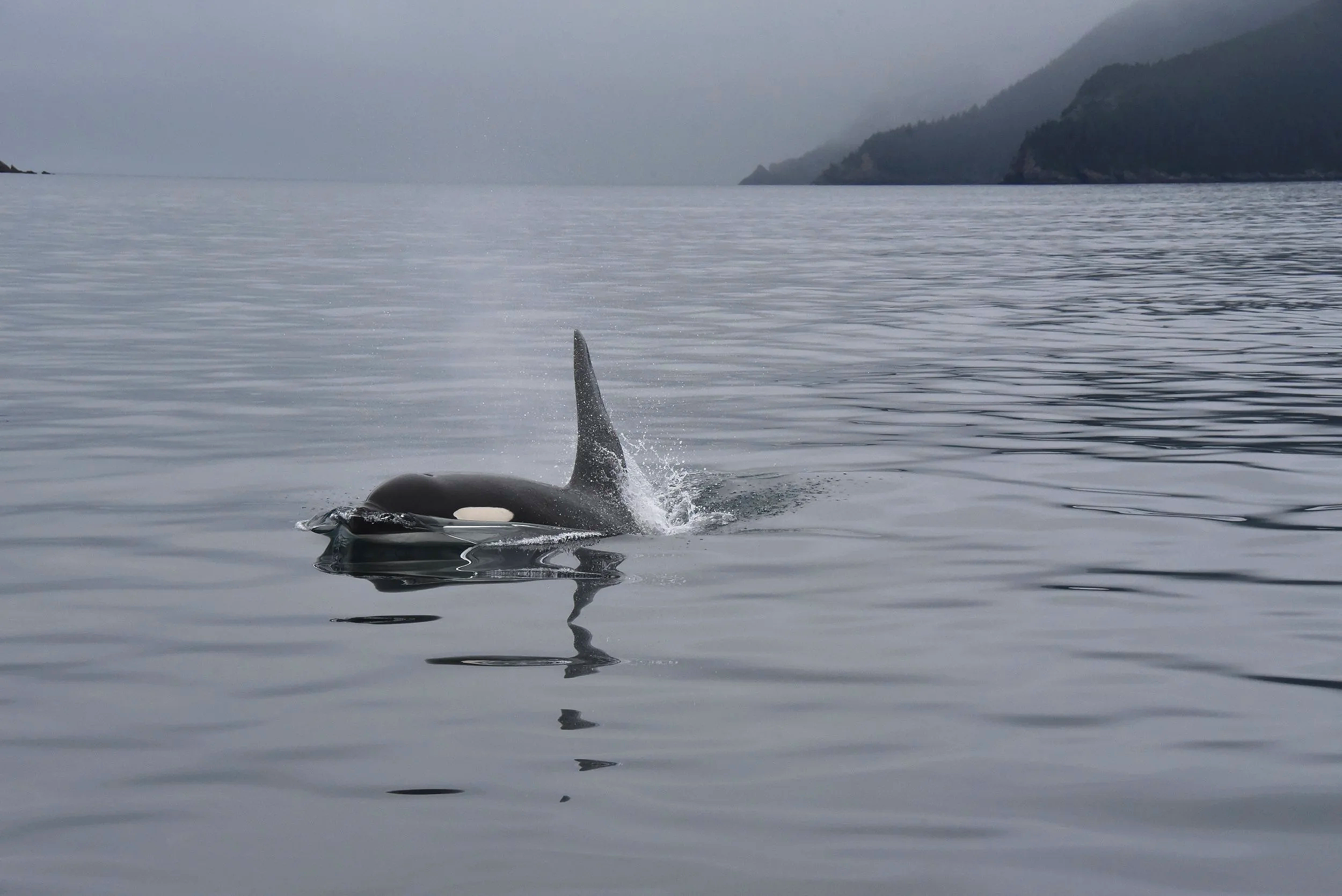
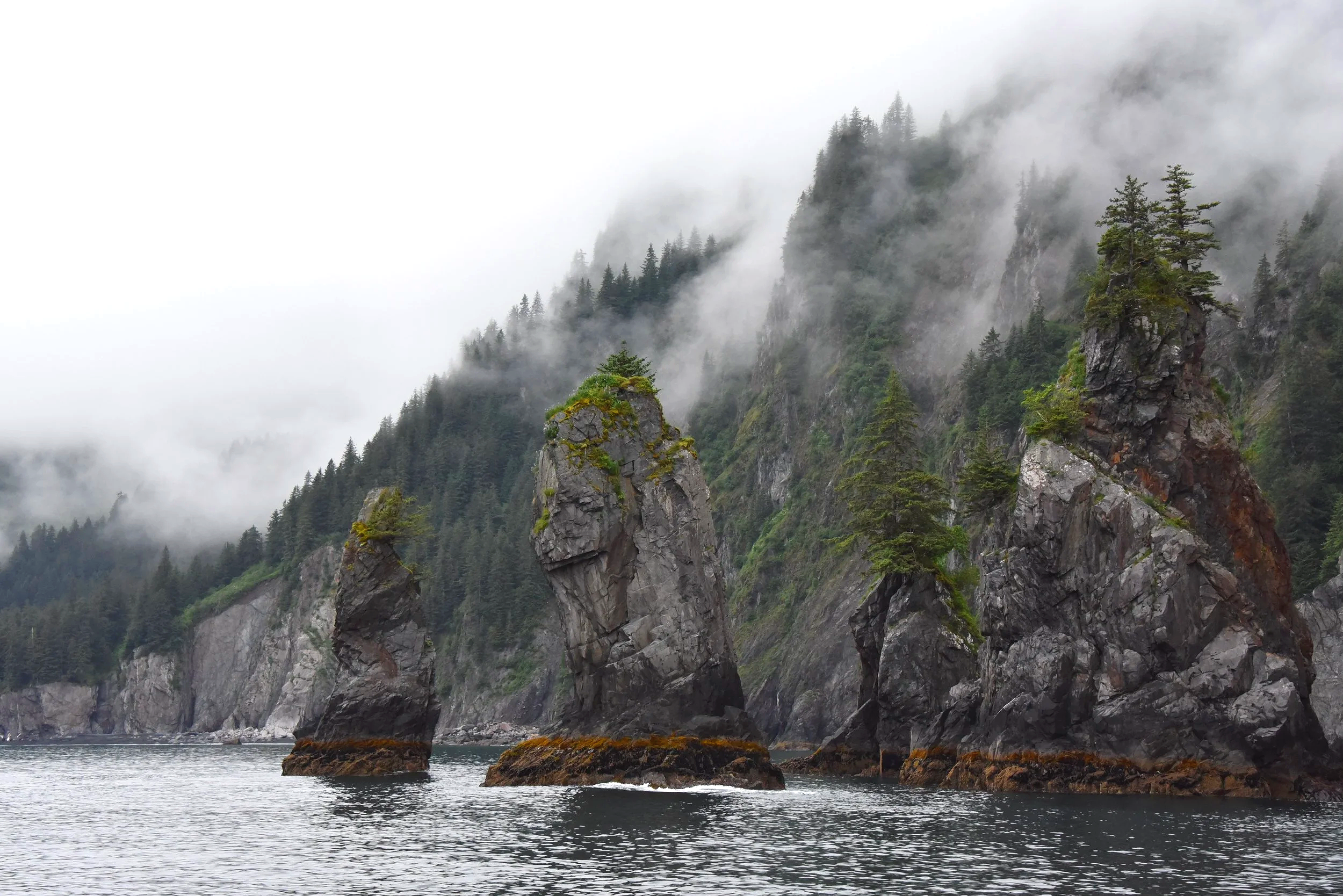
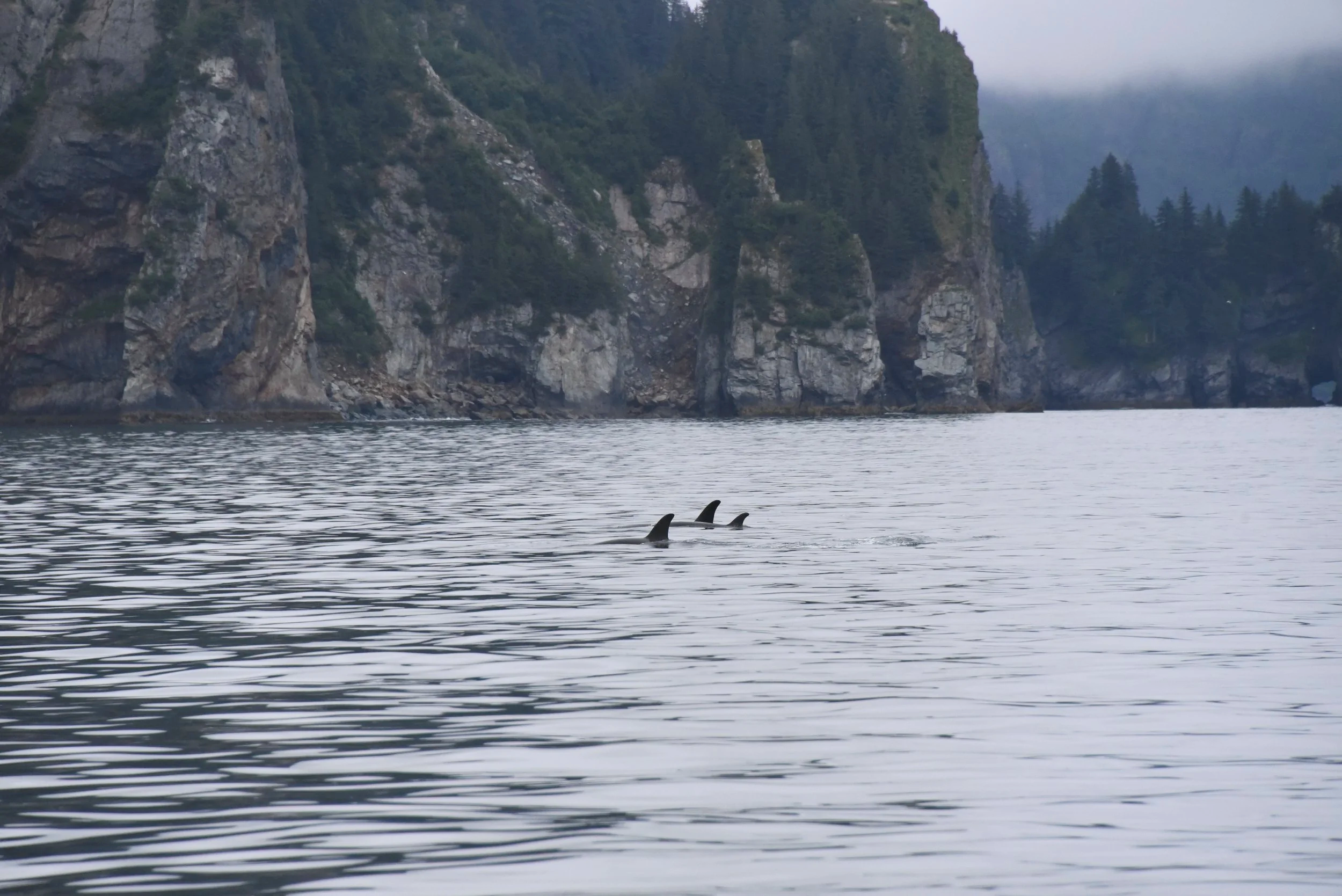
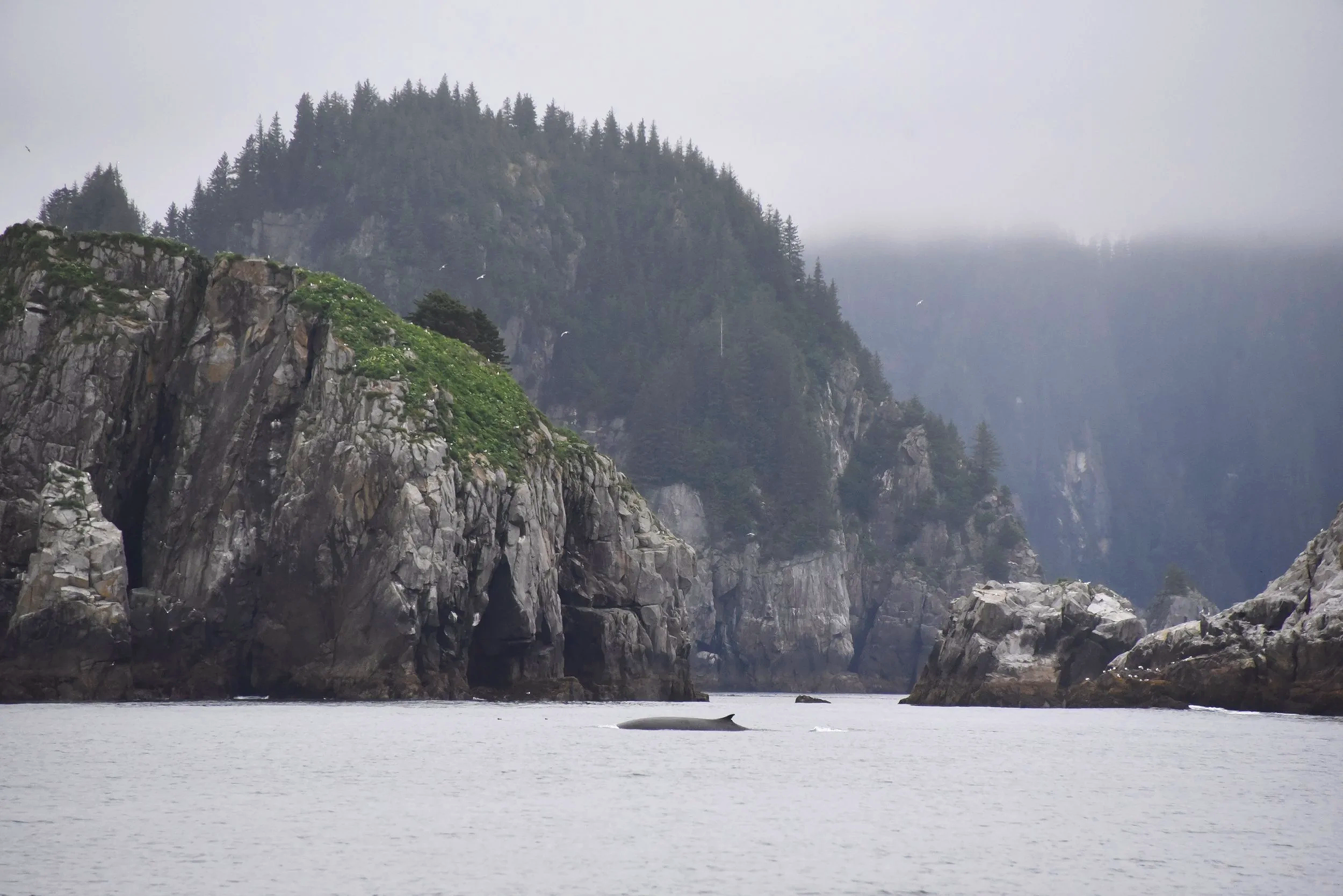
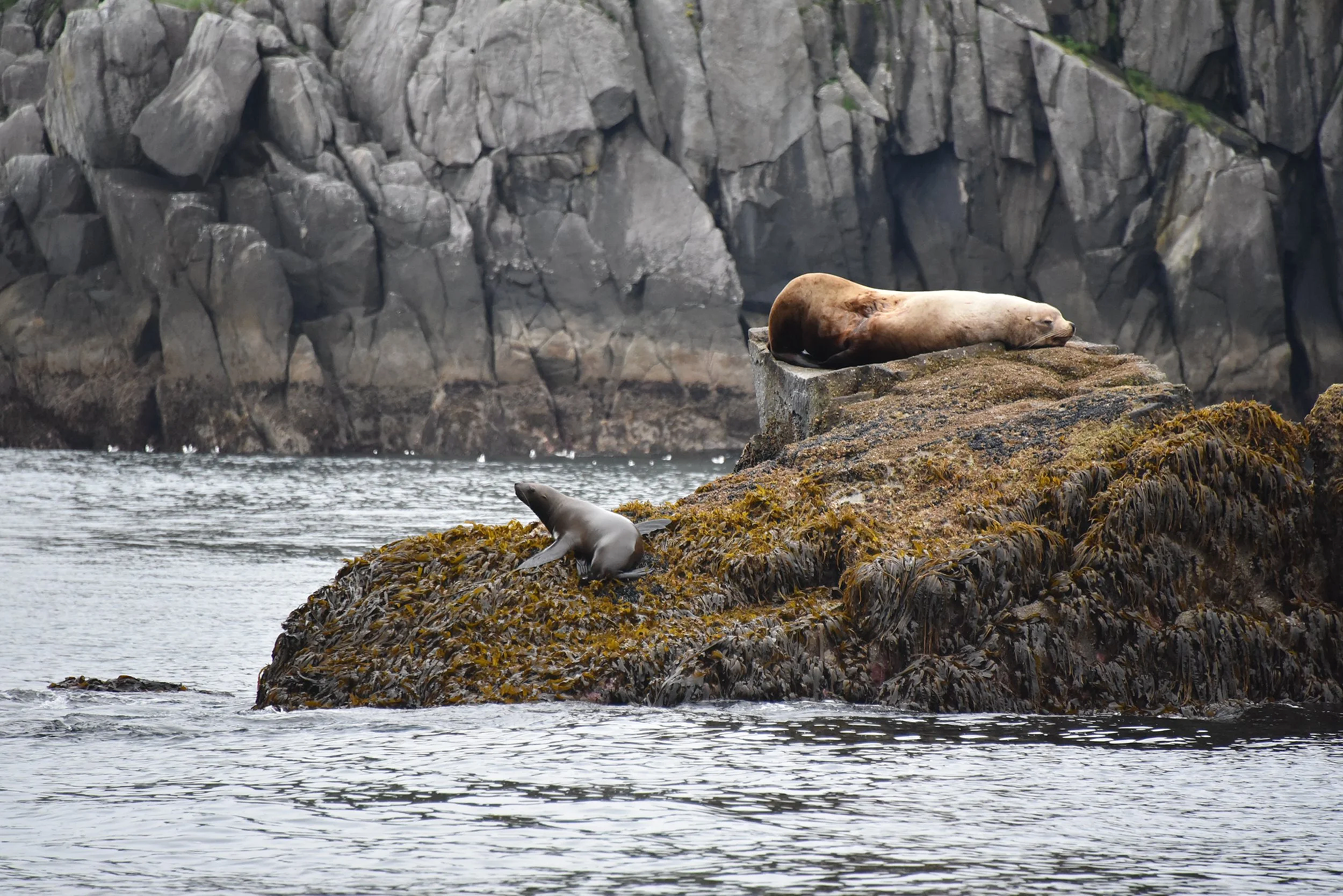
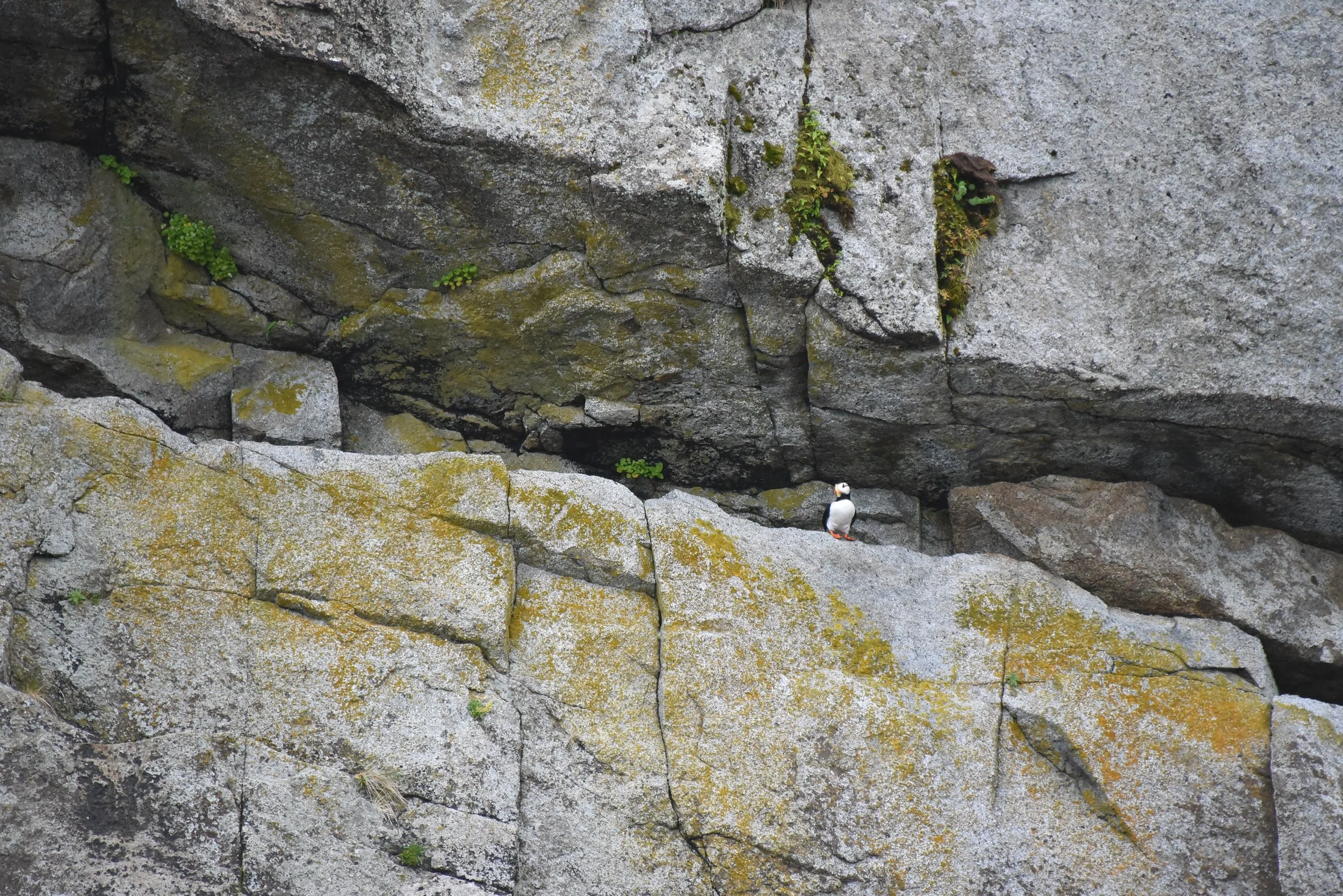
On our boat ride, our captain’s (and passengers’) keen eyes caught sight of humpback whales, orcas, sea lions, sea otters, harbor seals, starfish, porpoises, and puffins! I am not a wildlife gal, but this ride alone made feel like I was living out my middle school dream of being a National Geographic wildlife photographer. It felt incredible to capture so many wild moments.
When we docked, we donned spray skirts (I felt like a pro after it being part of my weeklong wardrobe in Isle Royale), and were on the water in no time. Our guide got us up close to Aialik Glacier for lunch. We ate sandwiches in the company of sunbathing harbor seals and thunderous cracking sounds of the inner icy layers of the glacier. Every part of this trip was worth it.
Day 8 – Homer
After such an incredible tour, and a rest day the day prior, we did not really want to linger in Seward longer. We heard from several travelers that Homer was the place to go, and at this point, a four-hour drive one way felt like a short commute. My years of day trip drives to the Adirondacks and White Mountains were great training moments for this. We headed to Homer and the drive alone proved worthwhile. Moose meander alongside the road like deer back in New England. I will never tire of seeing moose in the wild.
Homer is a quaint, seaside town reminiscent of any Rhode Island town in the summer. We ate incredible halibut (in the halibut capital of the world), walked along the beach, and saw eagles on a nature preserve trail. Homer was a very active town, which I loved. There is a great pedestrian path that takes you to town, and in June, the wildflowers were plentiful and bordered the path for its entirety. So stunning!
As our trip slowly wrapped up, my dad said his only regret was not seeing a bear. I found a twenty-mile, less-traveled road on the way back from Homer that gave me a good feeling. The forest that the road envelopes you in experienced a terrible wildfire years ago and sadly was still recovering. We made it fifteen miles in and were still surrounded by dead trees. At mile 16, there was a lovely overlook of the lake we drove past on the way to Homer. The viewpoint was beautiful, and made this detour worth it — with or without wildlife sightings.
Of course once we resigned ourselves to not seeing wildlife, at mile 17, I caught sight of something in the distance – a large, black boulder, and three smaller stones. Turns out, a mama bear and her three cubs were eating their roadside dinner and we stumbled upon it! Two cubs even climbed some trees for some post-dinner playtime. I couldn’t believe our luck!
We returned to Seward, all smiles.
Day 9 – Seward to Anchorage
Our final drive returned us to Anchorage along Seward Highway, where there are ample moments to pull over for seaside, mountainscape views. Our flight out was an early one, so once we returned to Anchorage, the trip essentially concluded.
Day 10 – Travel Day (Headed home)
Have you visited Alaska? Are there any national parks there you’re adding to your bucket list?
If you enjoyed this itinerary, check out these other hidden national park gems:
Kayak Isle Royale National Park — Michigan’s Hidden Gem
13,000 Footer, Alpine Lakes, and More in Nevada’s Only National Park
Kentucky’s Best Kept Secret: Mammoth Caves National Park
Florida Offers More Than Disney Rides — Go on a Sailboat and Airboat Tour

